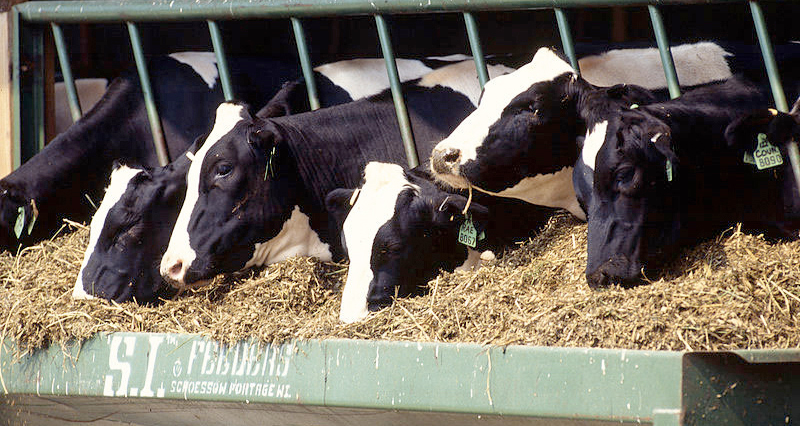
Farmers are urged to reconsider feeding systems and look at margin not yield as recent research suggests forage based dairy systems, which balance high milk output with the maximum use of forage, can be the sustainable ideal according to dairy consultants Andersons.
Farmers are urged to reconsider feeding systems and look at margin not yield as recent research suggests forage based dairy systems, which balance high milk output with the maximum use of forage, can be the sustainable ideal according to dairy consultants Andersons.
In a study(1) commissioned by leading fertilizer company Yara, Andersons’ Friesian Farm model, a notional 150-cow Midlands dairy with year-round calving, confirmed that whilst milk from grazed grass is the cheapest/litre, a forage based system, using good quality conserved forage, can be the most profitable alternative.
The study compares the pros and cons of three of the UK's typical dairy feeding systems:
• A concentrate based system, aiming to maximise milk yield (averaging 9,300L)
• A grazing based system, producing milk cheaply with lower yields (averaging 6,500L)
• A forage based system, looking to balance high milk output with the maximum use of forage (averaging 8,000L)
The results show that, whilst the concentrate based model produced the highest yields, they are expensive to achieve with a cost of production of 28.6ppl (£3,988/ha) and, at current milk prices (and adding in BPS and ELS support payments) leave a negative business surplus of -0.9ppl (-£122/ha).
Comparatively, the grazing based system – with less feed, labour, machinery, lower replacement and housing costs - had the lowest cost of production at 25.7ppl (£2,503) with a business surplus of 3.1ppl (£302/ha).
“The study did show that grazed grass is the most cost-effective way of feeding dairy cows, but also that each model has its benefits,” said Richard King Head of Business Research at the Andersons Centre. “Whilst variable and overhead costs are reduced for the grazing model, property depreciation charges increase due to investment in grazing infrastructure. Also, for reasons of farm size, layout, soil and climate, not all farms will be able to adopt an extreme grazing system.”
The concentrate system, not only relies on expensive bought in feeds but is based on pushing yields, which can place extra demands on the cow, and brings higher veterinary, AI fees and replacement rates, also higher bedding and labour costs. “These increases in variable costs are not proportional to milk yield,” Mr King continues “which makes them more difficult to recover, especially given current milk prices.”
The forage based model, which is still quite intensive but with good quality conserved forage substituted for concentrate feed, had a slightly lower milk yield but the lower cost of production (26.83ppl/ £3,220/ha) led to a business surplus of 1.1ppl (£126/ha).
This approach was adopted by the winner of the Yara Grass Prix, David Murphy, who achieved a grass value of £2,281/ha having spent £185 on fertilizer.
The competition, in which leading beef and dairy farmers compete to achieve the highest energy yield averaged over their first two silage cuts gives grass a financial value by comparing it to buying in the same amount of ME in compound feeds and has shown that the greater the yield from forage, the more profitable a system can be.
“Both the Anderson Report and the Grass Prix confirm that the key to a successful forage based system is to grow good quality grass, and it is easier to achieve than you think,” says Jez Wardman, Agronomist at Yara UK.
“This means treating grass just as you would an arable crop, including regular reseeding, the use of quality fertilizers and by completing a nutrient management plan – based on soil analysis – to ensure all the crops nutrient requirements are met by balancing the use of slurries with appropriate fertilizer recommendations.”
